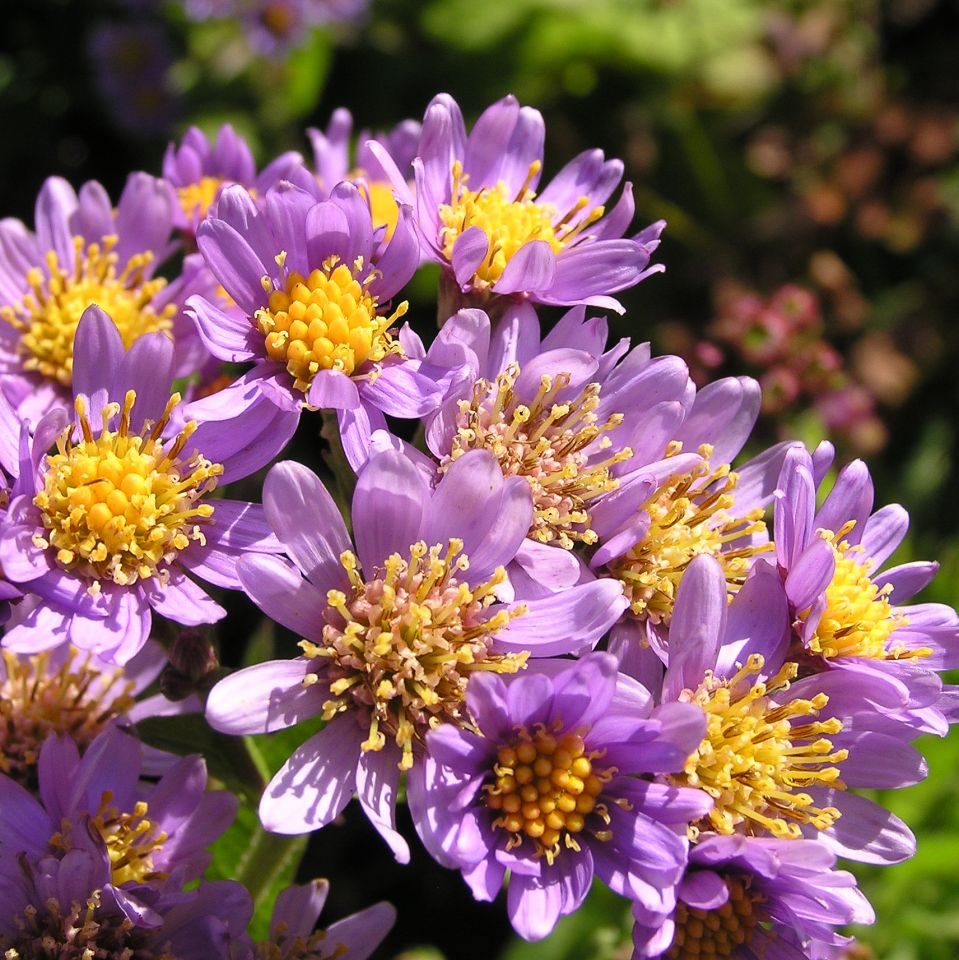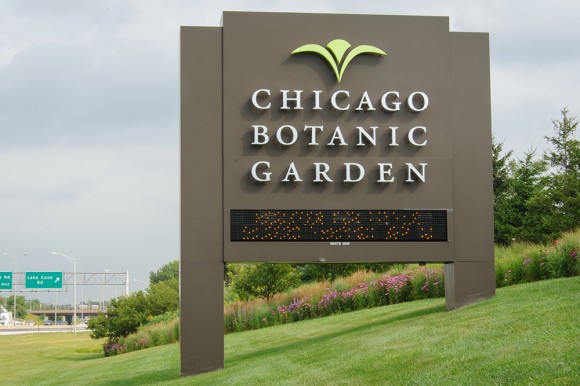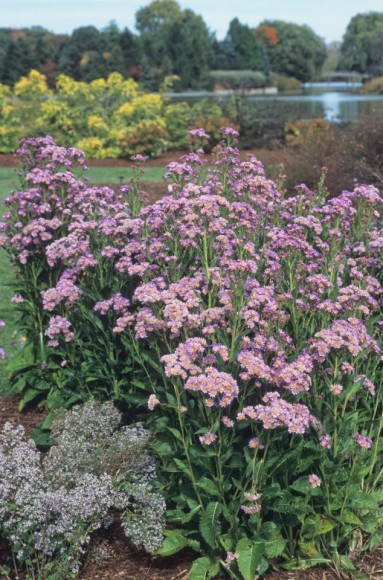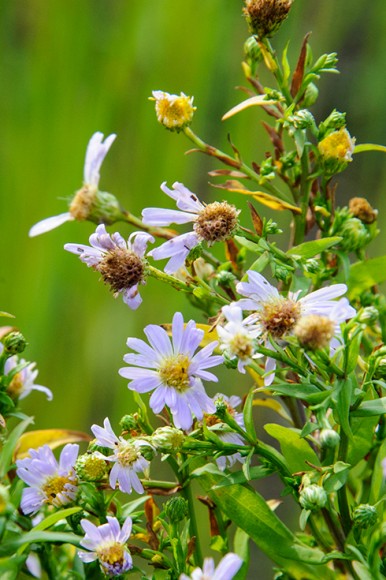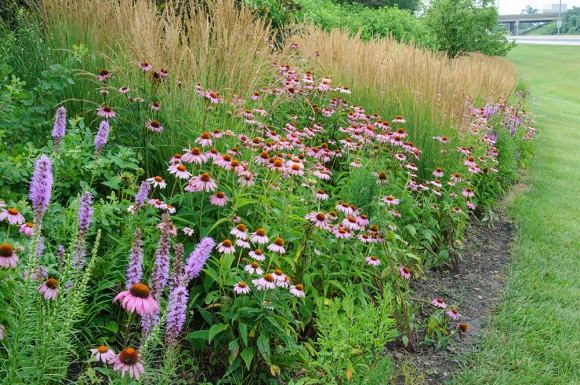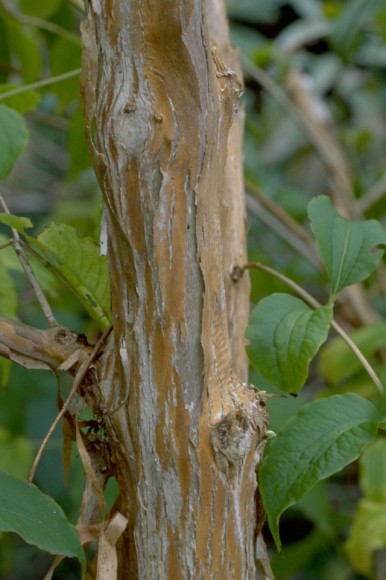
Are you looking for a plant that offers some “wow” at the end of the season? That particular something that offers color, and maybe even more? Here’s something on steroids: Heptacodium miconioides.
This large shrub or small tree (15 to 20 feet tall on average), native and rare in the wild in China, was successfully reintroduced to western horticulture in the 1980s, and its popularity has come to span the globe for good reason: this is not just a brilliant autumn performer—it’s a year-round beauty! I suppose we can start the story when this ornamental shrub is dormant in the winter, with its striking exfoliating bark peeling off of nearly every branch in tan, cream, or light brown ribbons or patches, revealing the underlying tissue that has developed into a wash of many colors: vertical striations of creamy white, deep yellow, green, tan, bluish-green, olive green, brown, ochre, and even rust; more so as the plant ages. But that’s just the beginning of the show.
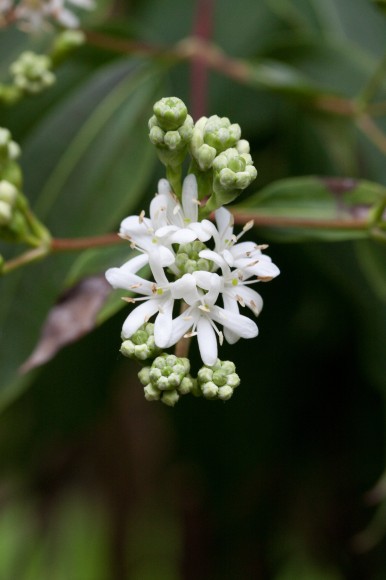
Heptacodium are among the first to sprout leaves in the spring, and their light green color is especially attractive. Should they break dormancy in an early thaw and the leaves succumb to a return of the cold, do not fret, because they’ll start over again. This plant likes to grow. Once the leaves fill in and the warm weather settles in, you’ll have a beautiful, irregularly umbrella-shaped, dense canopy of long, shiny, deep green leaves. And suckers. Be sure to catch them in late May and cut them off, as they can easily and rapidly form straight whip-like vertical branches that mess up the plan. You may even need to revisit the suckering scene in late summer, as it simmers down and readies to bloom.
Let your Heptacodium establish for a couple of seasons into a V-shaped, multistem plant, then select three to seven sturdy stems for the plant to stand on, and cut off the rest of the stems, including the suckers. (As we’ve mentioned, this plant likes to sucker. Profusely. Even if it gets run over by an off-road vehicle—and some of ours have—it will sucker back into a strong and proper plant in one or two seasons.) They really like to grow, and with few natural (nonautomotive) pests to disrupt their progress, they’re reliably hardy in the Chicago area’s Zone 5 climate.
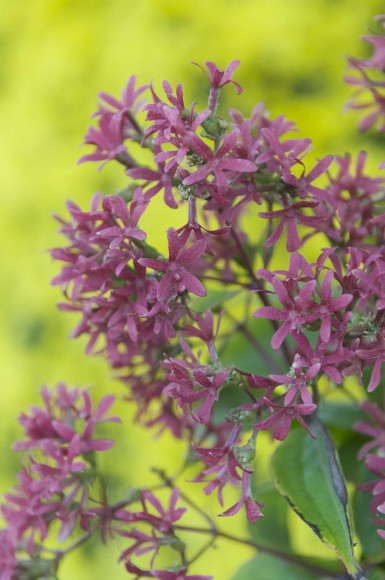
In late summer the plants begin to set up for their flower display, developing whorls of buds at the tips of the branches; these structures form bracts of seven, hence its common name, “seven-son flower.” These open progressively, until the entire plant is covered in a cloud of tiny white blooms that smell somewhat like jasmine or alyssum—a sweet scent, to be sure. As amazing as this display can be, it changes even more. As the small dark fruits (or seeds, or berries) form, the white petals fade, and the corollas (flower petals) form sturdy calyces (a calyx is a specialized petal that wraps around the fruit) that color up into reds ranging from rose to nearly purple; some are even bluish in color, which can last as late as November, when the birds will find these treats and finish them off.
But wait—there’s even more! We’ve come full-circle back to the amazing winter display of that colorful, textural, exfoliating bark. With all of this to enjoy, seriously consider placing one (or more) of these beauties in a highly visible, year-round spot in your garden.
©2013 Chicago Botanic Garden and my.chicagobotanic.org

